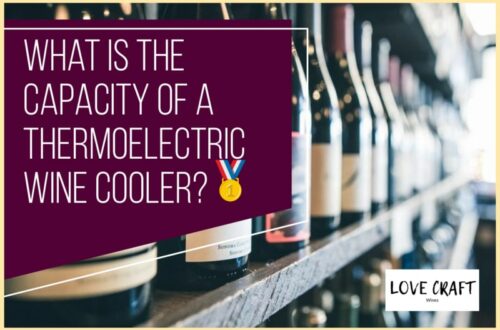Did you know that improper storage can ruin the taste and quality of your wine? In fact, up to 10% of all wine produced globally is spoilt due to poor storage conditions.
As a wine enthusiast, you’ve invested time and money in selecting the perfect bottle, so it’s crucial to ensure it’s stored correctly to preserve its flavor and value.
Proper wine storage is more than just keeping it in a cool, dark place. Temperature, humidity, and light exposure all play a role in determining the quality of your wine.
With so many storage options available, it can be overwhelming to choose the best solution for your needs. In this article, we’ll explore the different factors to consider when storing wine and help you make an informed decision on where to keep your wine.
Table of Contents
Importance of Proper Wine Storage
Ensuring your favorite bottle ages gracefully and delivers the perfect taste requires giving it the proper environment to flourish. Wine preservation is essential to maintain the flavor and quality of your favorite bottle.
Proper wine storage is a crucial factor that can determine the aging potential of the wine. When wine is stored in a place with the right temperature, it can age correctly, and the flavor can mature into something exceptional. Wine that is stored in a temperature-controlled environment has a better chance of aging gracefully and developing the intended taste.
The aging potential of wine is a crucial factor that determines the quality of wine. Proper wine storage can help preserve the aging potential of wine for a longer time.
Temperature considerations are an essential element to keep in mind when it comes to wine storage. The right temperature can make a significant difference in the taste and aging potential of wine.
The next section will provide you with an in-depth analysis of temperature considerations when storing wine.
Temperature Considerations
Imagine your body as a delicate flower that needs just the right amount of sun and shade to thrive. Similarly, your wine needs a consistent and cool temperature to flourish and reach its full potential.
Temperature control is one of the most important factors to consider when storing your wine. Wine storage is not just about where to keep your wine, but how to keep it in the ideal conditions. The ideal temperature for wine storage is between 45°F and 65°F (7°C and 18°C), with a target of around 55°F (13°C).
Fluctuations in temperature can cause wine to expand and contract, leading to oxidation and spoilage. It’s also essential to avoid exposing your wine to excessive heat, as high temperatures will cause the wine to age prematurely and develop off-flavors.
Therefore, it’s best to store your wine in a location away from direct sunlight and heat sources, such as a basement or wine cellar. In the next section, we’ll discuss the importance of humidity and light exposure in wine storage.
Humidity and Light Exposure
You’ll want to pay attention to how much moisture and light your wine is exposed to, as these factors can greatly impact the taste and quality of your precious bottle. Proper wine preservation involves cellar maintenance that helps maintain a consistent and moderate level of humidity, typically between 50-70%.
Too much humidity can lead to mold growth on the corks, while too little can cause the corks to dry out and shrink, leading to air exposure and oxidation of the wine.
Light exposure is also a crucial aspect of wine storage to consider. Ultraviolet light can cause wine to age prematurely and develop an unpleasant taste. Direct sunlight is particularly harmful, as it can cause the wine to become ‘lightstruck’ and develop an undesirable smell similar to wet cardboard.
Keep your wine away from windows and other sources of direct light, or use UV-resistant glass or curtains to protect your bottles.
Now that you know how to maintain the ideal humidity and light conditions for your wine, let’s explore the different wine storage options available to you.
Different Wine Storage Options
When it comes to choosing how to store your precious bottles, it’s important to consider the different options available to find the one that best suits your needs and preferences.
One of the most popular wine storage options is the wine fridge. These appliances are designed to maintain a consistent temperature and humidity level, which is ideal for keeping your wine in optimal condition. They come in various sizes, from small countertop models to larger units that can hold hundreds of bottles.
Wine fridges are also a good choice if you have limited space, as they can be placed in smaller areas such as under a counter or in a closet.
Another option to consider is a wine cellar design. This is a more permanent solution, as it involves building a dedicated room or space for your wine collection. Wine cellars offer the advantage of being able to store a large number of bottles, and they also provide the opportunity to create a unique and personalized storage space.
However, wine cellars require more planning and investment than a wine fridge, as they typically involve insulation, cooling systems, and proper ventilation. Ultimately, the choice between a wine fridge and a wine cellar will depend on your budget, space, and personal preferences.
Choosing the Best Solution for Your Needs
To choose the best option for you, consider your budget, space, and personal preferences, weighing the advantages of a wine fridge or a wine cellar.
If you have a small collection and limited space, a wine fridge is a great option. They come in various sizes and can be placed in your kitchen or living room. They’re also affordable and can keep your wine at a consistent temperature.
However, if you have a larger collection and want to invest in a long-term storage solution, a wine cellar may be a better choice. Wine cellars can be built to your specifications with custom wine racks and can hold thousands of bottles. They’re also perfect for those who want to age their wine for several years. However, they require a significant investment and require proper insulation and humidity control.
Ultimately, the decision between a wine cellar vs a wine fridge comes down to personal preference, budget, and space. Consider these factors carefully when making your choice, and you’ll have a wine storage solution that meets your needs.
Frequently Asked Questions
Can wine be stored in a regular refrigerator?
Storing wine in a regular refrigerator may seem convenient, but it’s not ideal for several reasons.
Firstly, the temperature fluctuations in a regular refrigerator can damage the wine’s flavor and aroma.
Secondly, the humidity levels are too low, which can cause the cork to dry out and let air into the bottle.
This can lead to the wine oxidizing and eventually spoiling.
Instead, consider alternatives to refrigerators, such as a wine fridge or a wine cellar.
These options provide consistent temperature and humidity levels that are essential for proper wine storage.
Remember, maintaining temperature consistency is crucial for preserving the quality of your wine.
How long can wine be stored in a wine cooler?
When it comes to storing opened wine, a wine cooler is a great option. It can keep your wine at the ideal temperature, which is usually around 55 degrees Fahrenheit, and prevent it from spoiling too quickly.
While the length of time you can store wine in a wine cooler varies depending on the type of wine, most can be stored for several months to a few years. However, it’s important to keep in mind that even with optimal storage conditions, wine will eventually go bad, so it’s best to drink it sooner rather than later.
Overall, a wine cooler is a convenient and effective way to store your opened bottles of wine for as long as possible.
Does the type of wine affect storage requirements?
Did you know that storing your wine at the wrong temperature range can affect its taste? In fact, wine experts say that about 90% of wine spoilage can be attributed to improper storage conditions.
Different types of wine require different temperature ranges and humidity levels to maintain their quality. For example, red wines are typically stored at a warmer temperature than white wines. Additionally, wines with a higher alcohol content can typically be stored at slightly higher temperatures than lower alcohol wines.
It’s important to keep your wine in a cool, dark place with consistent temperature and humidity levels to ensure its longevity and optimal taste.
What is the ideal angle for storing wine bottles?
When it comes to wine storage, the ideal angle for storing wine bottles is lying horizontally. This is because it keeps the wine in contact with the cork, preventing it from drying out and allowing for proper aging.
However, it’s important to also consider the design of your wine rack. There are various options available and they all have different benefits. For example, wall-mounted racks save space and add a decorative element to your room, while freestanding racks can hold a larger number of bottles.
Additionally, temperature considerations are also important for wine storage. It’s best to keep your wine in a cool, dark place with a consistent temperature to prevent it from spoiling.
Overall, taking the time to properly store your wine can enhance its flavor and prolong its lifespan.
Is it necessary to rotate wine bottles during storage?
If you want to maintain the quality of your wine over time, it’s important to consider the impact of temperature fluctuations and sediment buildup.
While rotating your wine bottles during storage can help prevent sediment from settling at the bottom, it’s not always necessary.
The frequency of rotation depends on the type of wine and how long you plan to store it.
However, temperature fluctuations can have a significant impact on wine quality, so it’s crucial to keep your wine stored in a cool, dark place with consistent temperatures.
Conclusion
Congratulations! You’re now an expert in wine storage. Armed with all the knowledge and information about temperature, humidity, and lighting, you’re ready to embark on a journey of wine preservation and protection.
But wait, before you start stocking up your basement or kitchen cabinets with wine bottles, let’s take a moment to laugh at some wine storage myths.
First, storing wine in a kitchen cabinet or on top of the fridge isn’t a good idea. Not only are these places too warm, but the constant opening and closing of the cabinet or the vibrations from the fridge can damage the wine.
Second, although it may seem romantic to store your wine in a cellar, not everyone has access to one. But fear not, there are plenty of other options available to preserve your precious wine collection.
So, go ahead, invest in a wine refrigerator or a wine rack, and enjoy your wine without worrying about it going bad. Cheers!





